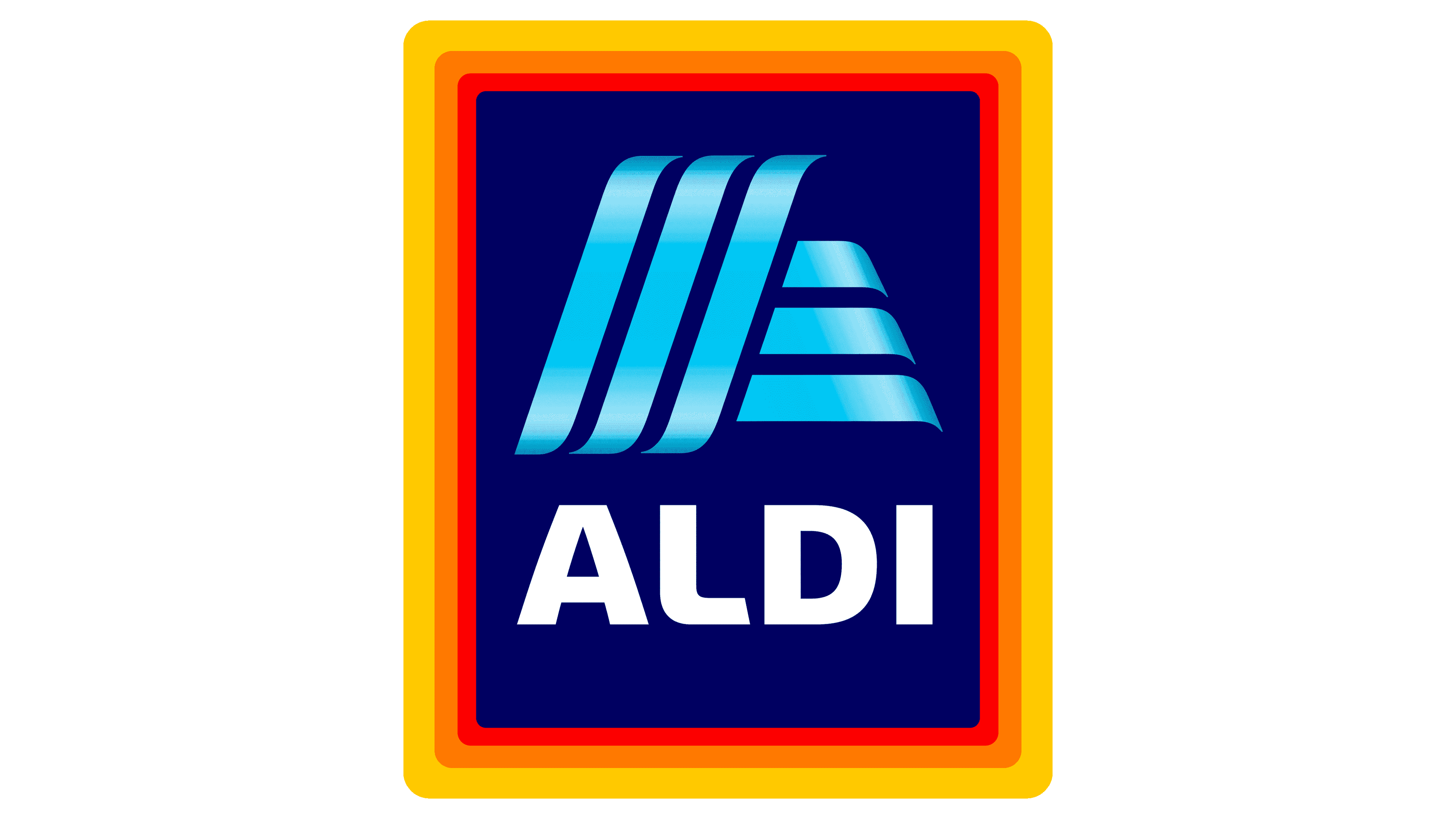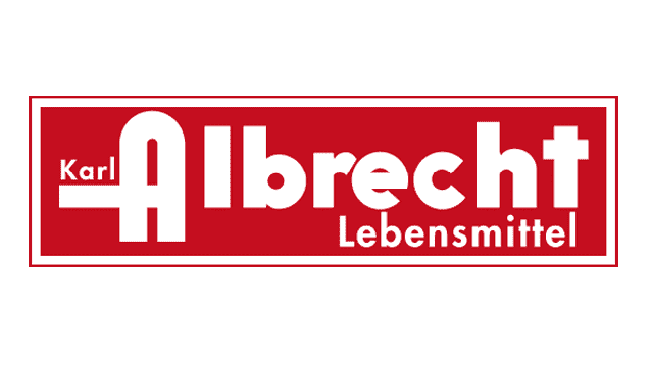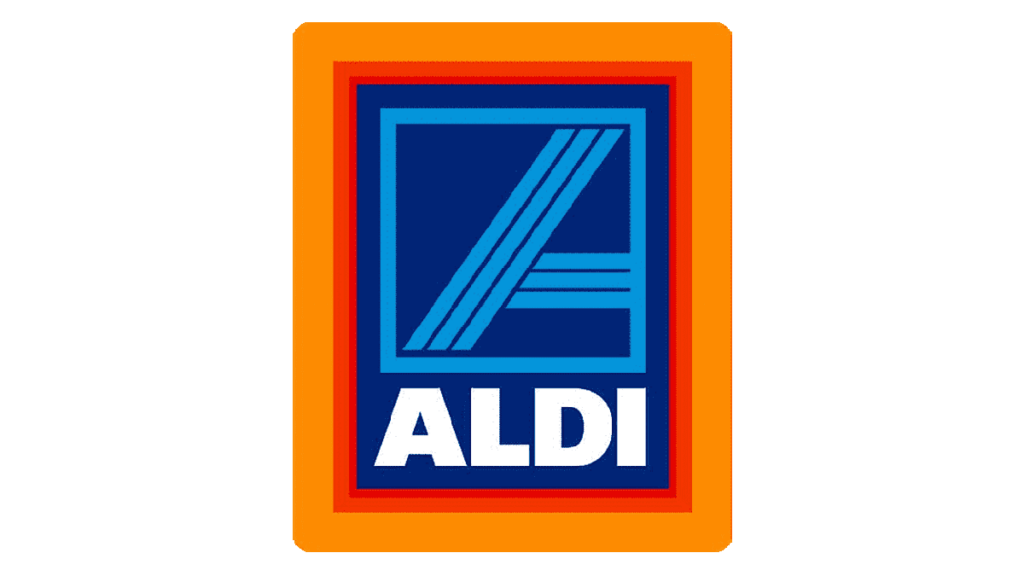Aldi Logo
Tags: discount | Germany | supermarket
Aldi, a colossus in the retail industry, was conceived by the entrepreneurial vision of Karl and Theo Albrecht. Emerging from a simple grocery store in Germany, Aldi has evolved into a global retail powerhouse. This dynamic enterprise is divided into Aldi Nord, under the ownership of the Theo Albrecht family, and Aldi Süd, steered by Karl Albrecht’s descendants. Aldi’s business philosophy hinges on streamlined efficiency and a commitment to affordability without compromising quality. The company has carved out a significant niche in various markets, including Europe, the United States, and Australia. With over 10,000 stores worldwide, Aldi’s impressive global presence is a testament to its innovative approach to retailing, combining cost-effective strategies with customer-centric services to redefine the shopping experience.
Meaning and history
The story of Aldi, a paradigm of retail success, began in 1946 when Karl and Theo Albrecht transformed their mother’s local grocery store into a burgeoning retail chain. The moniker ‘Aldi,’ derived from ‘Albrecht Diskont,’ epitomizes the essence of the brand – quality products at discounted prices. Aldi’s journey is marked by pioneering the discount supermarket concept, profoundly influencing consumer shopping behavior worldwide. The company’s milestones include the introduction of a limited yet meticulously curated product selection, the establishment of exclusive Aldi brands, and the implementation of highly efficient store operations. These strategic moves not only enhanced consumer trust and loyalty but also cemented Aldi’s position as an industry innovator. Today, Aldi stands tall as a global retail titan, continuously expanding and adapting to changing market dynamics. Its relentless focus on customer satisfaction, environmental sustainability, and community engagement ensures its ongoing relevance and growth in a highly competitive marketplace.
What is Aldi?
Aldi, a trailblazer in the global retail landscape, is renowned for its discount supermarket model. Offering a streamlined selection of high-quality products at exceptionally low prices, Aldi has transformed shopping norms. This approach, coupled with efficient store operations, underpins its widespread success and growing international footprint.
1948 – 1957
Encased in a rectangular frame, the logo captivates with its deep crimson tone, a color that immediately draws the eye. Central to this design is the name “Albrecht,” rendered in a striking white hue that sharply contrasts with the vivid background. The typeface is a study in modern simplicity, with each character precisely spaced to achieve a harmonious balance. Flanking the main text, the words “Karl” and “Lebensmittel” are subtly positioned at the extremities, adding a layer of sophistication. This minimalist yet bold design radiates a sense of assurance and reliability, with its dominant color and straightforward typography embodying the trust and solidity often linked with time-honored brands.
1957 – 1963
This artful composition features a prominent red rectangular motif, artfully merging classic design sensibilities with a modern twist. At its heart lies the brand name “Albrecht”, showcased in a flawless shade of white. The chosen font exudes elegance and authority, ensuring that the name is indelibly imprinted in the mind of the beholder. Each letter is crafted with precision, from the elegant sweep of the “A” to the robust base of the “t”, reflecting a commitment to detail. The design’s deliberate avoidance of extraneous elements places the spotlight squarely on the brand name, symbolizing the brand’s confident identity. This minimalist yet impactful approach conveys a sense of refined sophistication and class.
1963 – 1968
The ALBRECHT logo makes a bold statement with its pronounced, uppercase typography set against a rectangular background. The brand name “ALBRECHT” is rendered in a bright white font, strikingly set against a background of rich, royal blue, creating a sharp visual contrast. This rectangular shape suggests stability and trust, while the blue hue deepens the sense of reliability and confidence. The logo’s straightforward design reflects a brand ethos centered on clarity and directness, indicative of a company with a rich heritage in its field. Its uncluttered style makes it highly adaptable for a range of applications, from digital media to physical signage.
1968 – 1975
This iteration of the ALBRECHT logo maintains its distinctive design elements, yet introduces nuanced variations. The brand name “ALBRECHT”, in assertive, all-caps lettering, remains the focal point, reinforcing brand recognition. The background is a rich shade of deep purple, evoking luxury, sophistication, and a touch of exclusivity. The bold white letters offer a striking contrast against this noble backdrop, emphasizing the logo’s clarity and precision. The rectangular border, refined and slightly slimmer, frames the brand name, symbolizing protection and consistency. This design iteration speaks to a brand that values excellence, a rich history, and a commitment to upholding its prestigious standing in the market. Its minimalist design ensures the brand name remains central and memorable.
1975 – 1982
The original Aldi logo, conceived in 1970, featured a simple yet striking design: a bold white logotype on a bright purple backdrop, enclosed in a slender white outline. The typeface was a substantial sans-serif, characterized by its thick lines and angular letter cuts. This stark contrast of white against purple gave the logo an eye-catching and memorable look, portraying Aldi as a formidable and professional entity in the marketplace.
1982 – 2006
In its 1982 redesign, Aldi introduced a graphic emblem to complement its white logotype. The new emblem consisted of a vertical purple rectangle, boldly framed in thick hues of orange and coral-red. Below this emblematic feature, the white wordmark was strategically placed, underlined by a light blue icon depicting the left part of the letter “A” in light blue lines. This addition added a dynamic visual element to the logo, enhancing its overall appeal.
2006 – 2017
The 2006 update to the Aldi emblem brought refined contours and a modernized, narrower typeface for the logotype. The graphic element, a stylized segment of the letter “A” in light blue, was redesigned with wider spacing, giving the logo a more contemporary and airy feel. The transition from an orange to a yellow frame infused the logo with a crisper and more vibrant energy, rejuvenating the brand’s visual identity.
2017 – Today
Aldi’s 2017 visual identity overhaul introduced a more fluid design, with the stylized “A” reimagined in smooth gradient ribbons. The lettering also underwent a transformation, adopting a sleeker and softer typeface with rounded angles and edges. Although the color palette remained consistent, the new line style lent the logo a brighter and more vigorous appearance, enhancing its visual appeal and impact.









